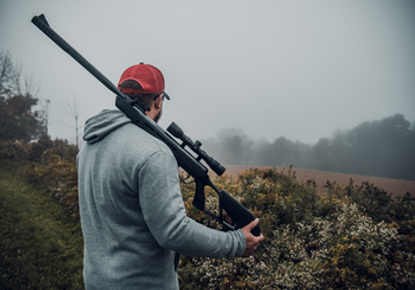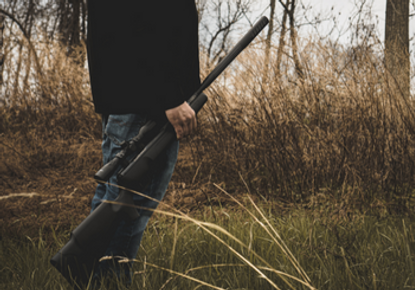10 Fundamentals of Break Barrel Air Shooting
Unjustly, break barrel air rifles have a reputation for being finicky. New shooters on the platform may become frustrated by the movement created by the mechanics of the spring inside the frame. That momentum shift, though, is easy enough to understand and doesn’t have to have a negative influence on accuracy, if you follow some simple steps.
Let's start by discussing the draw of the break barrel. These guns, with proper care, will run indefinitely. They are incredibly helpful in the field because they don't need air tanks or pumps to function. Pellets plus some good old-fashioned arm strength are all you need to get started.
1. Use the Right Pellets
There is a favoured pellet for many rifles. Different weights have different downrange performances. Different pellet shapes perform differently. There is no clear way to generalise how to choose the proper pellet. View the Crosman pellets here.
2. Give the Gun a Break-Period
The tremendous forces at work inside a break barrel rifle or pistol will shake things up. Even though most firearms are manufactured to exacting specifications, a break-in period is to be expected. This can be as few as 100 shots for some firearms. Some people might take more than 500. Before you begin measuring groups on paper, take it plinking. You will become accustomed to the recoil impulse and trigger and the action will have time to settle in.
3. Make Sure All Screws on Stock and Scope are Tight and Check Regularly
While we’re on the subject of movement, we need to talk about regular maintenance. Keep your toolbox close by. Screws frequently rattle and shake loose. During a day at the range, scope mounts that are snug at the beginning may not be as snug at the end. When visiting the range, make sure to check everything often. Additionally, resist the urge to apply thread locker or overtighten those screws.
4. Place the Butt Against Your Thigh for Leverage
Most air guns with break barrels are stiff. They call for some strength. I'd advise putting the butt on your thigh to keep the pieces in line and make cocking effective. This will secure the firearm and stop you from accidentally hitting the rifle with too much force.
5. Grip Just Below the Muzzle Brake
You'll need to exert a lot of force in order to start the action. Some firearms even require a small explosion near the barrel's end to crack it apart. You ought to hold the barrel there as well, but watch out for the muzzle break. You shouldn't put your palm over the barrel's end, take the chance of displacing any sound-dampening components, and you should definitely avoid applying pressure to the front sight post.
6. Keep a Firm Grip on the Barrel
Keeping the gun on your thigh is a great way to stabilise the rifle while you cock it. Hold on to the barrel as well. In addition to giving you the leverage you need to cock the rifle, holding onto the barrel also gives you control over how the barrel moves. Although it might seem obvious, there is a benefit. In order to reduce wear, cock the barrel in one fluid motion, place the pellet with your other hand, and then close the action. One hand should be used to firmly control the barrel's movement during the entire process. Contrary to what it may sound like, it is fluid. Additionally, by keeping a firm grip on the barrel with one hand you prevent any accidental release of the barrel. If the trigger is pulled or the cocking stroke is not completed, that force will bend your barrel. This is a costly mistake. Never take that hand off of the barrel while cocking!
7. Be Sure to Seat Pellet
This is a simple step, but one that’s often overlooked by novices. The pellet needs to be seated. If it isn’t, it will get marred when you close the action and that kills accuracy. Simply push it in far enough that you can’t feel any of the pellet protruding.
8. Know How the Rifle Likes to Be Held
With various ammunition, every rifle exhibits a varied behaviour. The same can be said about the actual activities. One model might function well while supported by a bag. One might not be. To determine which hand location yields the greatest results for you, it is best to experiment. Try different rests, but keep in mind that you should never put the pistol down on something rigid. Instead, try your forearm or some sandbags. Try positioning your support hand immediately in front of the trigger guard if you want to shoot freehand. The gun may be moved easily thanks to that balance point.
9. Don't Grip Tightly or Pull into Your Shoulder
Air pistols with break action move more than most other types. Allow them to go. There must be some place for the compressed spring's energy to go. The point of impact of your pellet will certainly change if you hold a gun in a death grip. Aim carefully, then let go of everything but your trigger finger. Hold through the recoil, but don’t feel compelled to choke it down.
10. Follow Through
The final guideline is equally crucial for using a pellet pistol and making a golf swing. Keep your form throughout the entire shot. People who react at recoil frequently start to flinch before to the recoil. Keep your attention on maintaining stability while firing the rifle. Do not blink, please. Maintain a downward gaze, remain seated behind the rifle, and then suddenly get up to check your target.
A broken barrel air rifle will work well for a very long period with some basic maintenance. They are one of the most effective ways to improve your shooting because they are effective, strong, and affordable.


